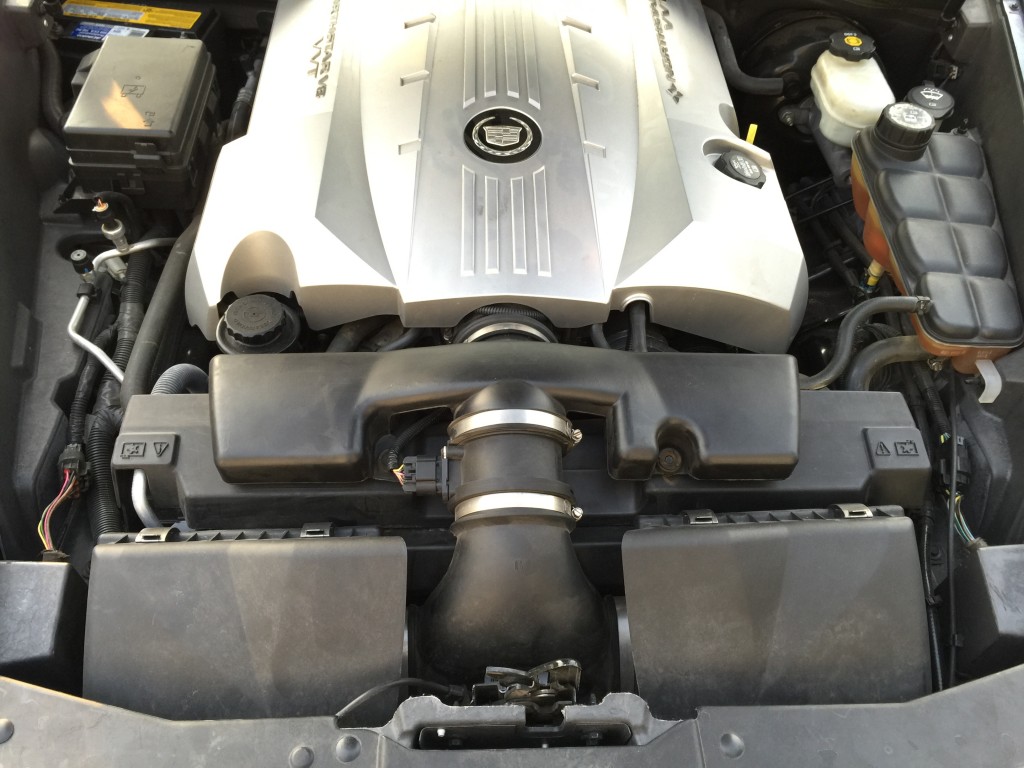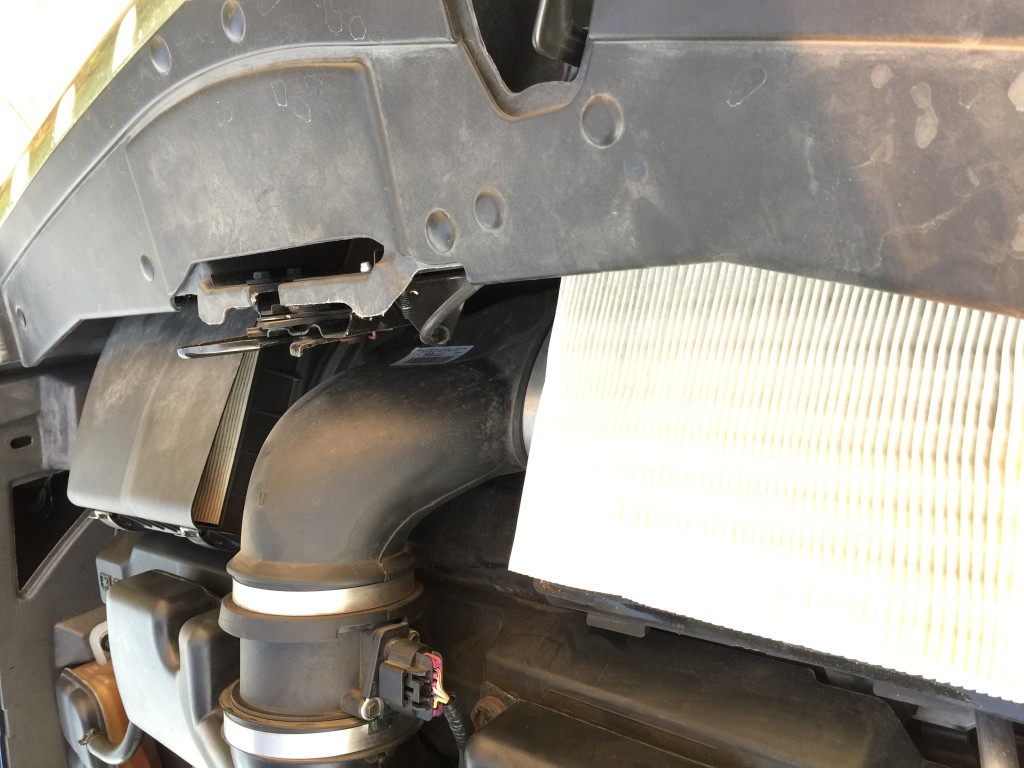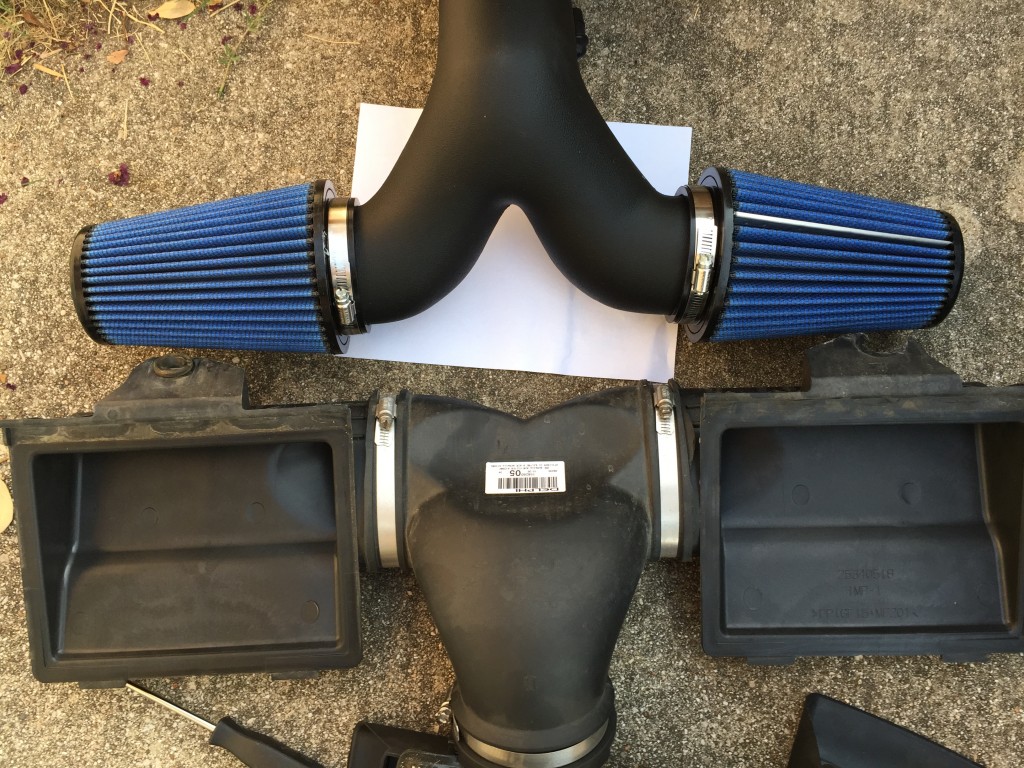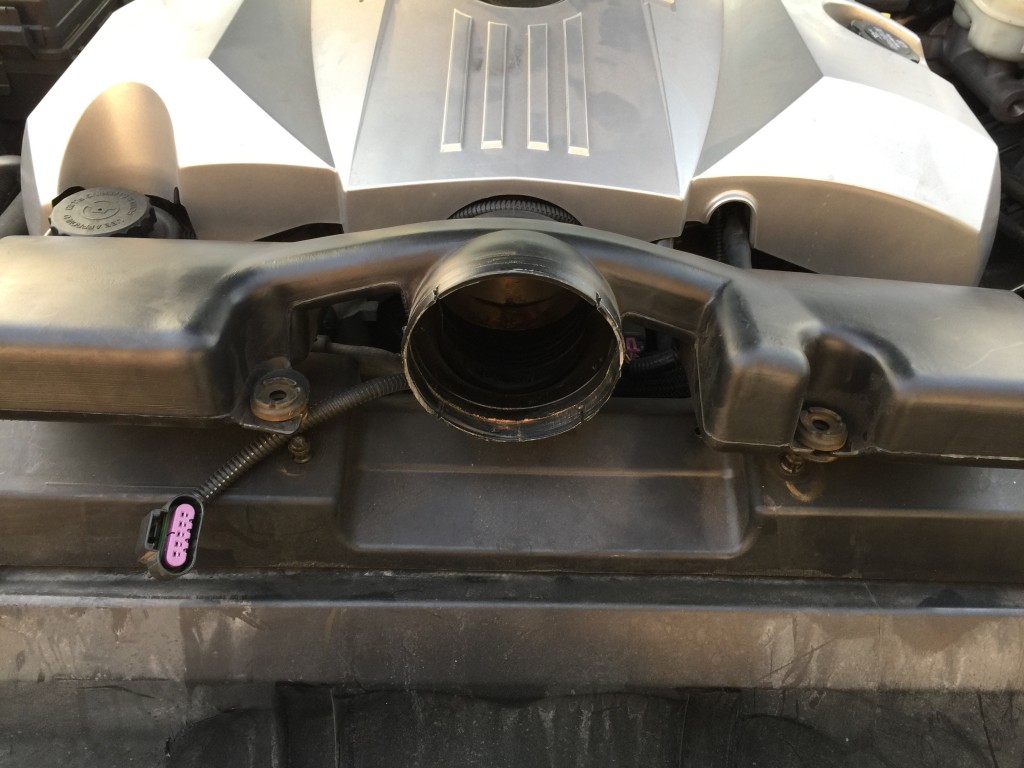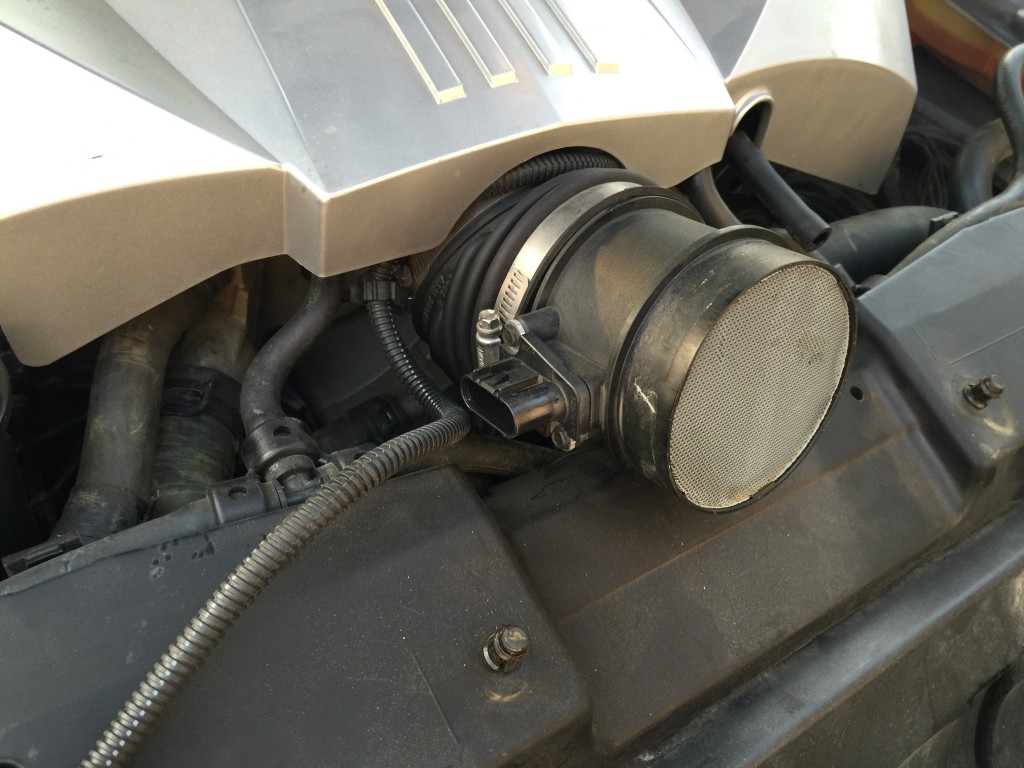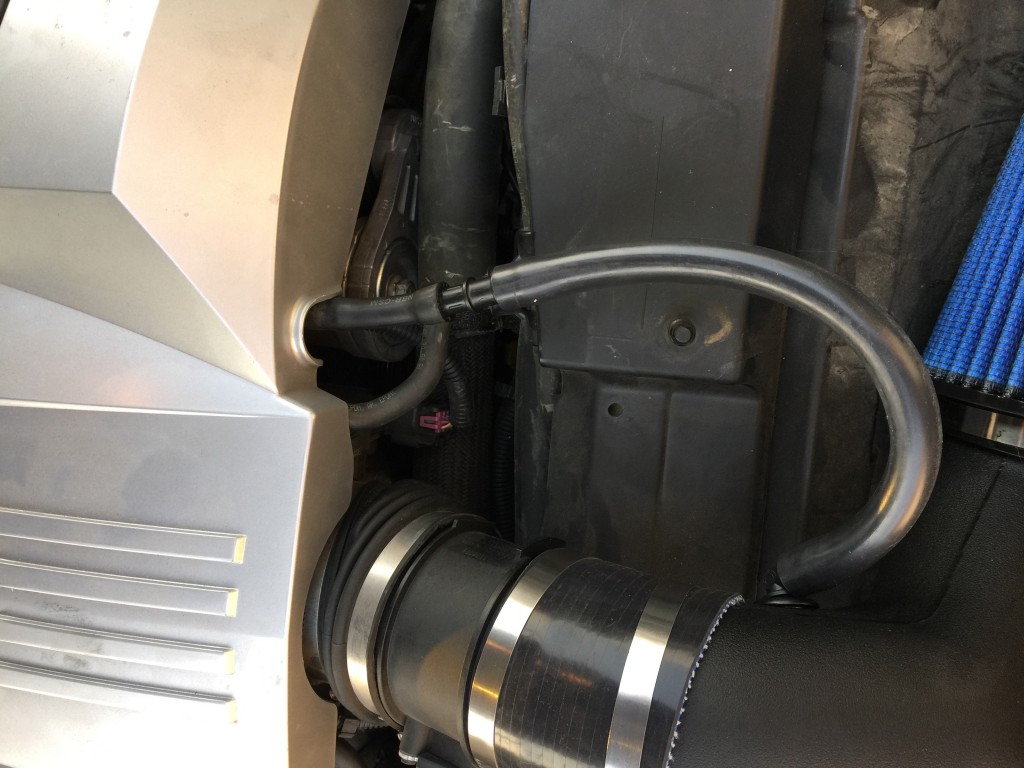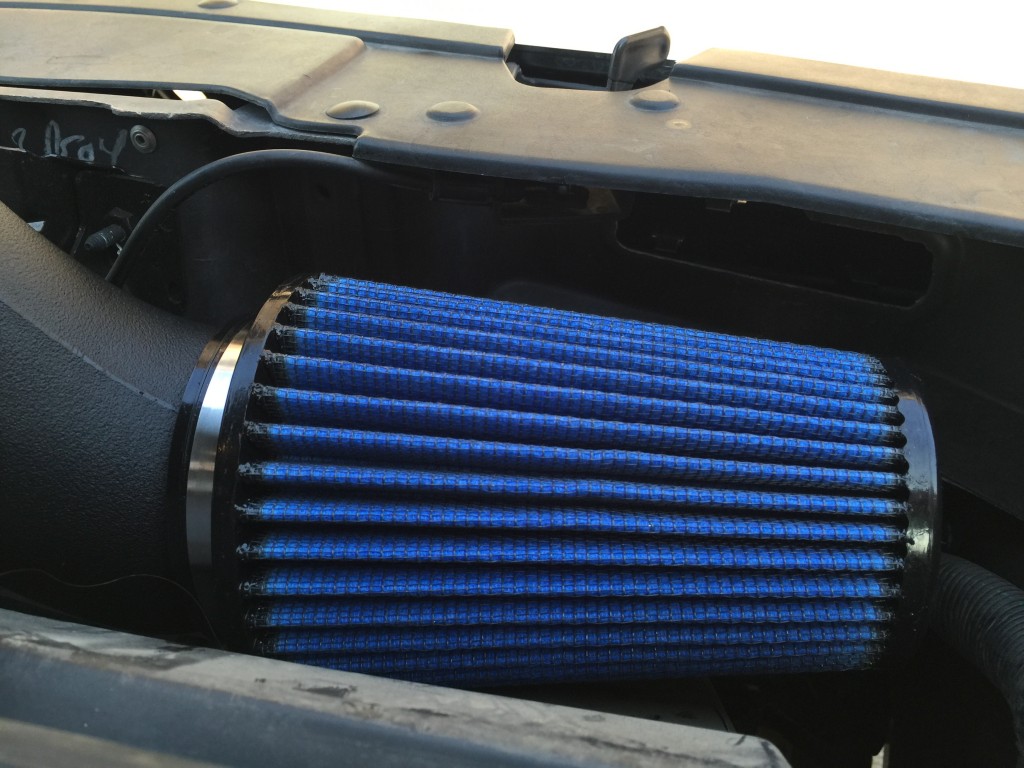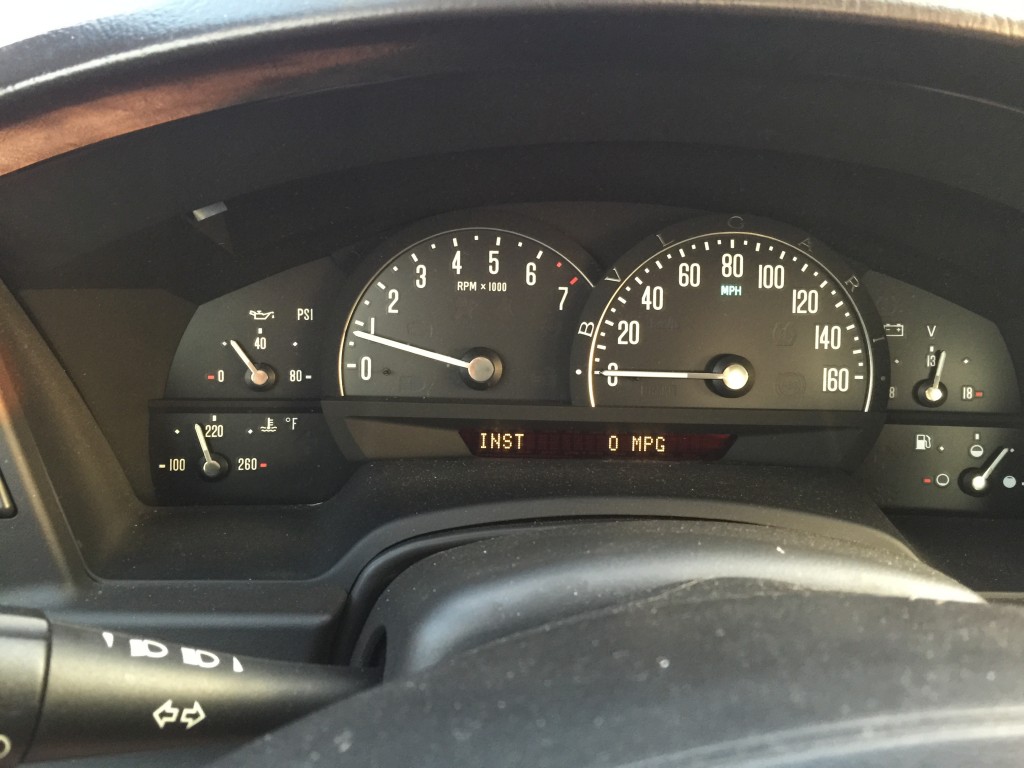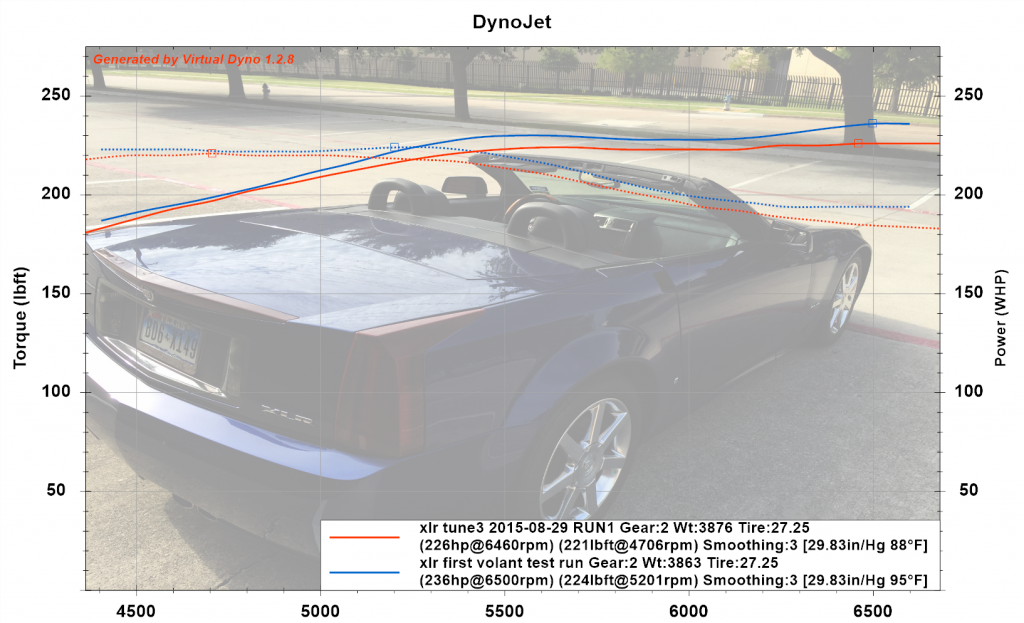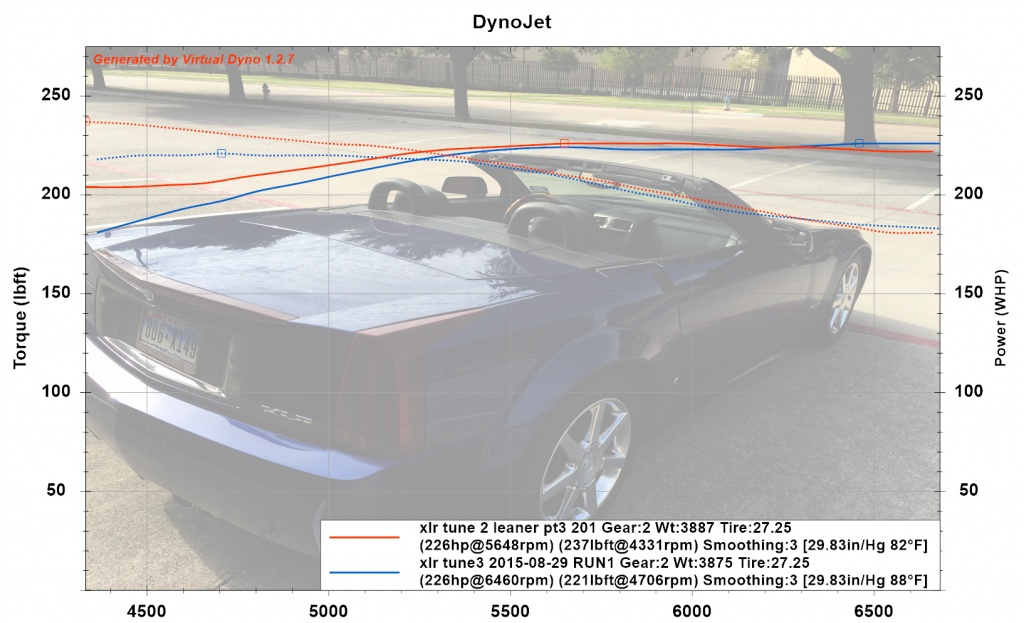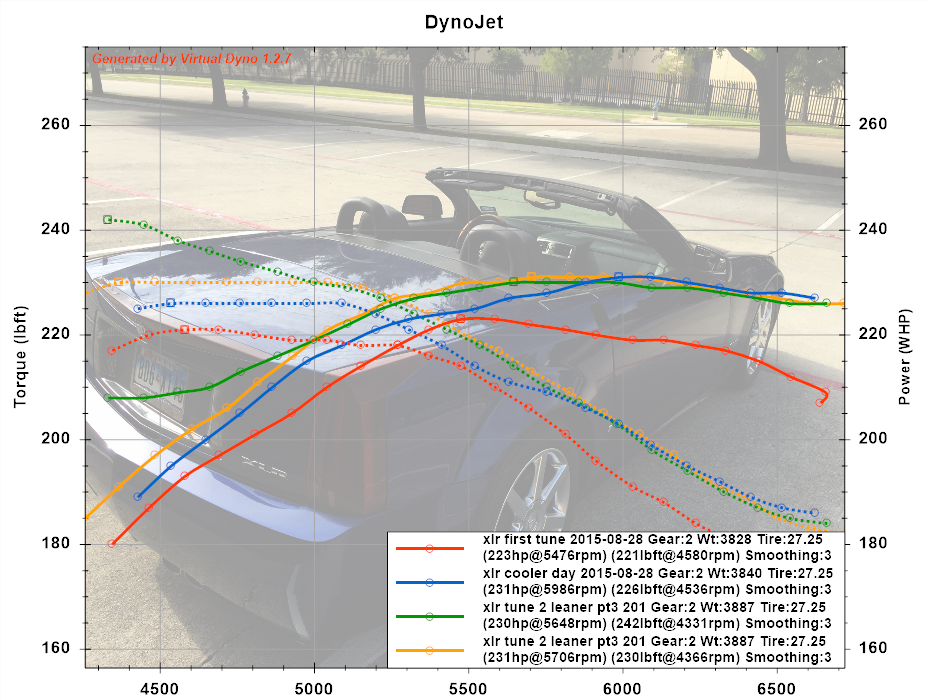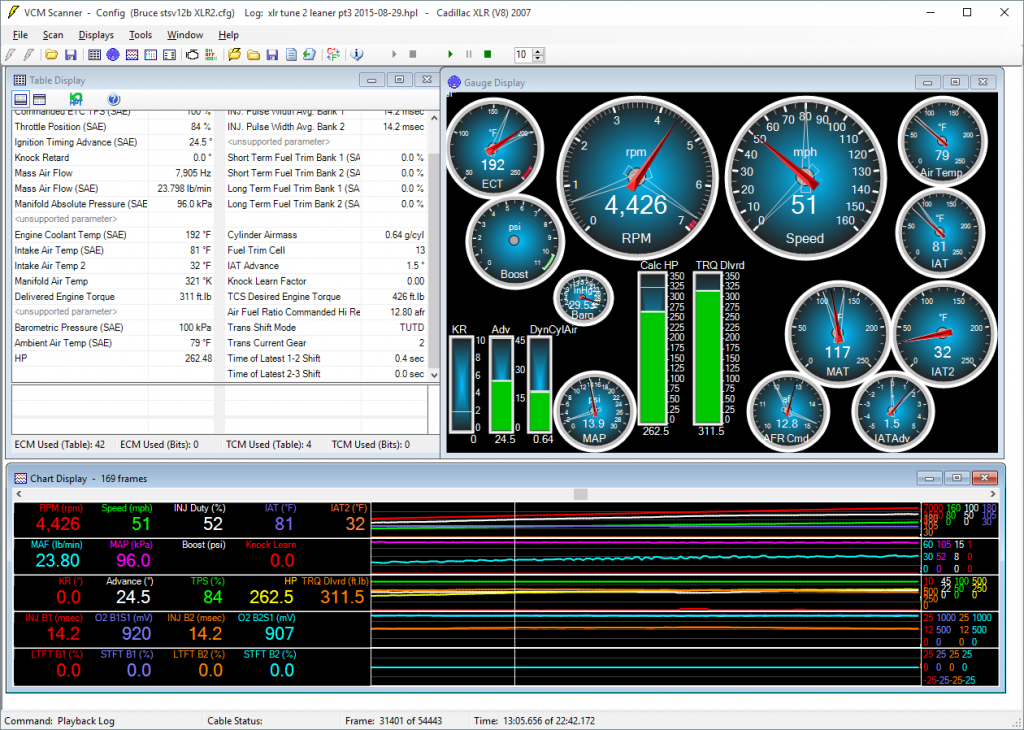Today I installed and tested a Volant Cold Air Intake p/n 25846150 for the Cadillac XLR.
Install
The install is pretty easy. A screwdriver is needed for the clamps, and a bit of WD40 or similar for the hose fittings.
This is the intake setup on the stock XLR. The air comes into the middle then flows down through openings facing the middle to dual filters and back to the middle and through the MAF into the intake. There are resonance tubes along the way to quiet the intake.
So the engine has to breath through that opening just above the filter on the left, then down through the filters 90 degrees, 90 degrees back to the center, where they turn 90 degrees to get to the MAF. Good filter area. The twists and turns the air takes are to prevent hydrolock in a heavy rain?
Stock intake vs the Volant Intake. The Volant has cones and large tubes for flow vs the elliptical pinched approach the OEM took.
Behind the MAF was this resonator tube. This probably captures and eliminates certain intake frequencies?
The XLR MAF is a switchblade style, and has a MAF screen to smooth air flow. I left that in place, but removed the resonator setup and air now flows directly from the MAF to the throttle.
This shows the Volant in position. The hose to the right is not attached yet, but goes from the breather hose to the intake. It took a bit of muscle and a drop of wd40 to get the hose barb properly inserted on the engine end.
Close-up on hose attachment and placement.
One of the two Volant cone filters up close.
The blue filter matches the blue XLR. The hood closed fine.
No trouble lights.
Results?
I have been using Virtual Dyno to measure results. These are 2nd gear pulls so they vary from a chassis dyno which would be done in the gear closest to 1:1 which for the XLR is 3 or 4.
[click to zoom in, back to return]
This graph shows tonight’s run in Blue, and the prior run with current tune in Red. The runs are on different days. Today was hotter at 95F vs 88F yesterday. What this appears to show is that the Volant added 10 whp and 3 lbft of torque. The blue line is clearly above the red line from around 4700 RPM up. This would mean the 320 hp LH2 now puts out about 320 + 10/.8 = 332 hp at the crank.
The intake also had an effect on the intake sound, and the exhaust sound. The fuel trims kicked up to around 10% each, which is another indication the MAF is now getting more air in than it expected. I will want to adjust for that in the tune or have the MAF dialed in on a dyno.
The XLR did not show any trouble lights, and the idle is smooth as always. The calculated hp and torque were lower than expected, so that seems to suggest that these are not predictive of real-world performance?

